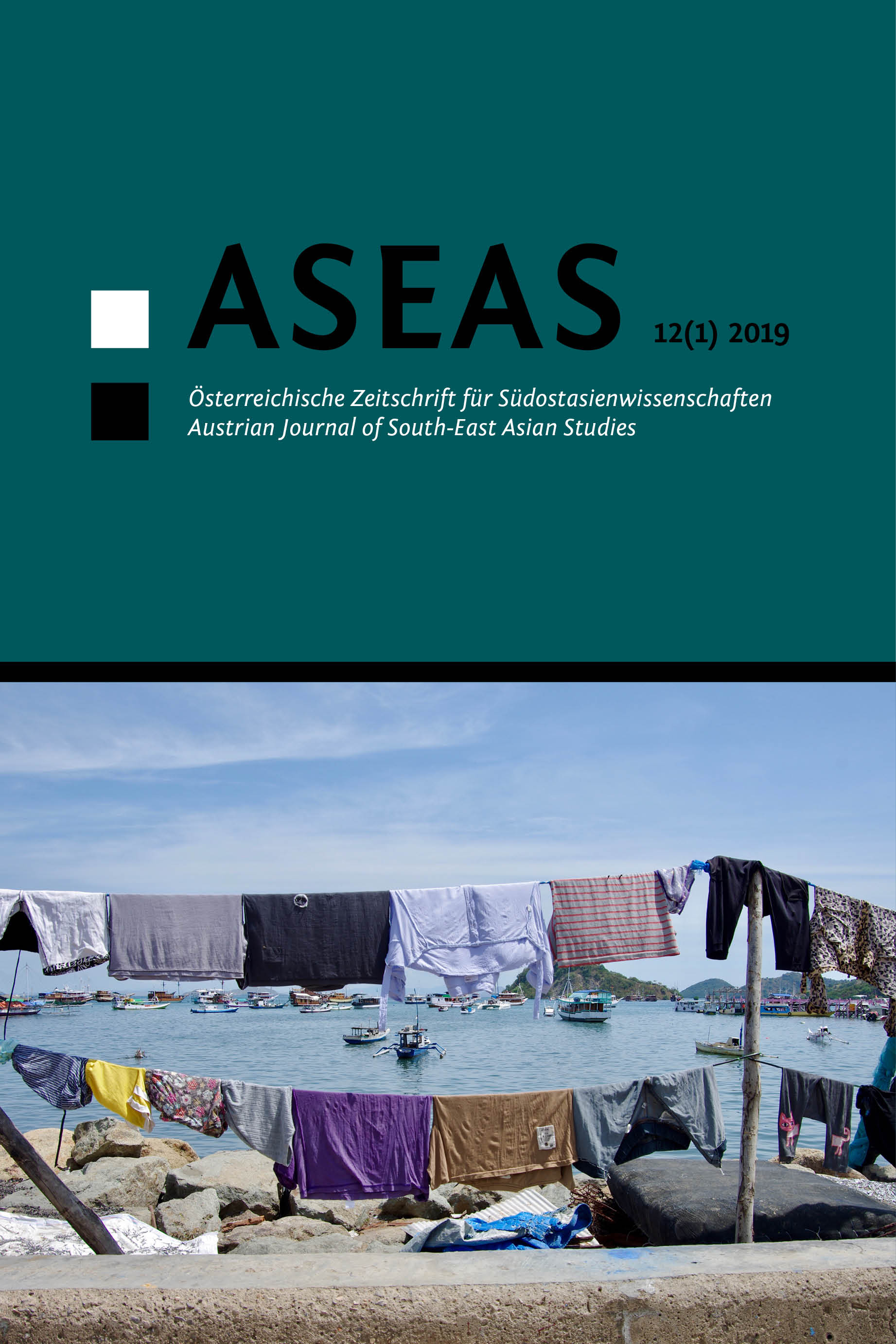Future-making and frictional mobility in the return of Burmese migrants
DOI:
https://doi.org/10.14764/10.ASEAS-0011Keywords:
Burmese Migrants, Future-Making, Mobility, Myanmar, Return MigrationAbstract
This article explores the experiences of recent returnees from Thailand to Southeast Myanmar and the complicated landscape of their future-making. In looking at the arduous journeys of Burmese migrants both in Myanmar and Thailand, I discuss how economic and political developments in reform-era Myanmar have informed Burmese migrants’ idea of return migration. Seeking a better life through coming home, they have encountered factors of friction and traction that either support or impede their plans. Accordingly, I argue that the return of these Burmese workers has become frictional mobility rather than a straightforward return. Ethnic politics and land boom in the region have intensified social inequality and conflicts that eventually make the organization of return more complex. The situation allows migrants to settle in their home country, postpone the return, and continue shuttling at the border while using the pattern of movement as a livelihood.
References
Cassarino, J.-P. (2004). Theorising return migration: A revisited conceptual approach to return migrants. International Journal on Multicultural Societies, 6(2), 253-279.
Chia, J., Aung, Y. M., & Shawng, K. B. (2016). Myanmar’s nascent democracy depends on federalism. Kennedy School Review. Retrieved from http://ksr.hkspublications.org/2016/03/23/myanmars-nascentdemocracy-depends-on-federalism/
Cresswell, T. (2010). Towards a politics of mobility. Environment and Planning D: Society and Space, 28, 17-31.
Dalsgård, A. L. (2014). Standing apart: On time, affect and discernment in Nordeste, Brazil. In A. L. Dalsgård, M. D. Frederiksen, S. Højlund, & L. Meinert (Eds.), Ethnographies of youth and temporality: Time objectified (pp. 97-116). Philadelphia: Temple University Press.
Flaherty, M. (2011). The textures of time: Agency and temporal experience. Philadelphia: Temple University Press.
Gashi, A., & Adnett, N. (2015). The determinants of return migration: Evidence for Kosovo. Croatian Economic Survey, 17(2), 57-81.
Gough, K. van, Langevang, T., & Namatovu, R. (2013). Researching entrepreneurship in low-income settlements: The strengths and challenges of participatory methods. Environment and Urbanization, 26(1), 297-311.
Gravers, M., & Ytzen, F. (2014). Burma/Myanmar: Where now Copenhagen: Nordic Institute of Asian Studies.
Hage, G. (2016). Questions concerning a future-politics. History and Anthropology, 27(4), 465-467.
Hannam, K., Sheller, M., & Urry, J. (2006). Mobilities, immobilities and mooring. Mobilities, 1(1), 1-22.
Hirvonen, K., & Lilleør, H. B. (2015). Going back home: Internal return migration in rural Tanzania. World Development, 70, 186-202.
Kirzner, I. M. (1997). Entrepreneurial discovery and the competitive market process: An Austrian approach. Journal of Economic Literature, 35(1), 60-85.
Kleist, N., & Jansen, S. (2016). Introduction: Hope over time – crisis, immobility and future-making. History and Anthropology, 27(4), 373-392.
Lall, M. (2016). Understanding reform in Myanmar: People and society in the wake of military rule. London: C. Hurst & Co.
Mya Mya Thet, & Pholphirul, P. (2016). The perception of Myanmar development on its return migrants: Implications for Burmese migrants in Thailand. International Migration & Integration, 17, 995-1014.
Smith, M. (1999). Burma: Insurgency and the politics of ethnicity. London: Zed Books.
South, A. (2008). Ethnic politics in Burma: States of conflict. New York: Routledge.
Downloads
Published
Issue
Section
License
Copyright (c) 2019 SEAS - Society for South-East Asian Studies

This work is licensed under a Creative Commons Attribution-NonCommercial-NoDerivatives 3.0 Unported License.
For all articles published in ASEAS before December 2014 and after July 2022, copyright is retained by the authors. For articles published between January 2015 and June 2022, the Society for South-East Asian Studies (SEAS) is the copyright holder. Articles published in ASEAS before December 2019 are licensed under the following Creative Commons License: Attribution-NonCommercial-NoDerivs 3.0 Unported. Articles published after that date are licensed under the following Creative Commons License: Attribution-NonCommercial-NoDerivs 4.0 International. In both cases, this means that everybody is free to share (to copy, to distribute, and to transmit the work) under the following conditions:
-
Attribution — You must give appropriate credit, provide a link to the license, and indicate if changes were made. You may do so in any reasonable manner, but not in any way that suggests the licensor endorses you or your use.
-
NonCommercial — You may not use the material for commercial purposes.
-
NoDerivatives — If you remix, transform, or build upon the material, you may not distribute the modified material.


